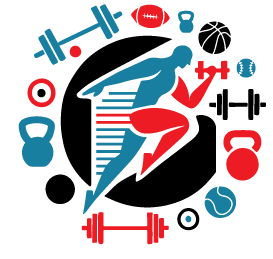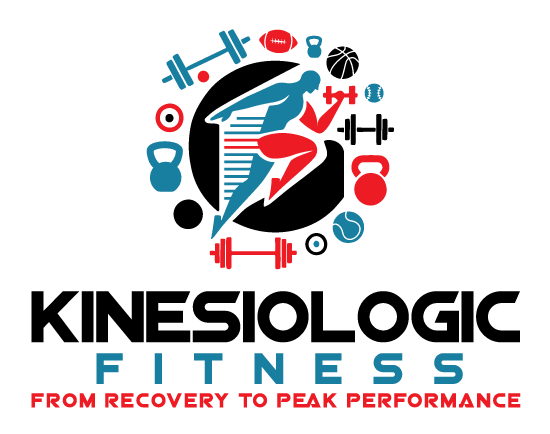The Vital Role of Exercise in Injury Prevention and Performance Enhancement for Young Athletes
Why is exercise important for young athletes?
Participating in youth sports is an exciting way for young athletes to develop their motor skills, build confidence and experience teamwork. The physical demand of sports however may make them susceptible to injuries, which can hinder both their performance and enjoyment of the game as well as the long term psychological effects that injury may have. Incorporating a structured exercise routine not only helps prevent injuries but also enhances athletic performance, laying the foundation for long-term success. Exercise is more than just a physical activity; it's a tool for preparing the body to handle the rigors of sports. From improving strength and mobility to fine-tuning movement mechanics, exercise provides young athletes with the physical and mental resilience needed to thrive in their sport.
Building a safe foundation through injury prevention
Young athletes are particularly vulnerable to injuries due to poor conditioning, overuse and improper movement patterns. an individualized exercise program designed by a certified strength and fitness professional can mitigate these risks by addressing key factors that contribute to injury. Majority of sports require different movement patterns in all directions and it is crucial to have strength, stability and proper movement literacy to be effective. Some of the common sports related injuries such as non contact ACL Strains or tears, ankle sprains and shin splints may often be avoided with a well rounded integrative exercise program.
Benefits of exercise for injury prevention
- Increase strength and joint stability: exercises that build strength and stability around vulnerable joints like knees, shoulders and ankles help protect these areas from sprains and tears.
- Enhance flexibility and mobility: static and dynamic stretching exercises enhance range of motion and help prepare the athlete for exercise activities, while also reducing muscle tightness and stiffness.
- Correct movement patterns: Performing exercises with focus on form and technique help improve biomechanics, allowing the athlete to perform explosive movements during sport activities safer.
- Reduce overuse injuries by incorporating recovery: Designing a balanced periodized program that incorporates recovery and Performing movements in all planes of motion will help prevent repetitive stress on joints and muscles.
Enhancing performance and athletic development
Being skilled and being talented are not the same, a talented athlete is naturally good at performing a skill, while a skilled athlete performs at his or her highest level and can still perform those skills again and again regardless of internal and external factors. thus exercise is a great tool in enhancing athletic performance in young athletes through increase strength, power, speed and agility. Achieving greater success and resilience through injury by conditioning their bodies to resist the stresses and physical challenges their sport throws at them.
Key performance benefits of exercise
- Develop strength and power: Training reactive and dynamic movements using body weight or resistance enhances power and explosiveness translating to faster sprints, higher or longer jumps and stronger throws.
- Improve speed and agility: Practicing drills that focus on quick directional changes, acceleration and deceleration and foot work will enhance the athletes ability to perform perform cuts faster and stop abruptly.
- Increased endurance: Aerobic and anaerobic conditioning increases stamina allowing athletes to perform at higher intensities for longer duration.
- Enhance coordination: Incorporating balance and stability exercises that challenge proprioception enhances accuracy and neuromuscular control allowing for smoother more controlled movements.
Habits developed today will translate tomorrow
Exercise should be treated more than a short term endeavor, it is about developing habits that will aid in long-term health and athletic development. By prioritizing exercise and instilling a healthy lifestyle through discipline and hard work will benefit the athlete beyond sports. Performing a well designed exercise program with a balanced integrative approach will also ensure growth plates, tendons and ligaments develop appropriately reducing the risks of chronic injuries as they age.
Long-term benefits of exercise for young athletes
- Supports healthy growth and development: an appropriate strength and conditioning exercise program developed based on the athletes age and unique needs promotes healthy physical development.
- Reduces risk of chronic injuries: Emphasis on correct technique and good recovery practices prevent excessive long-term wear and tear of muscles, ligaments and joints.
- Encourage consistency: setting a solid foundation by creating a routine schedule to follow promotes discipline and consistency to a road to lifelong wellness.
How should a structured strength and conditioning program for young athletes look?
The exercise program should be tailored to the individuals age, skill level and chosen sport and should first focus on proper form and technique of functional movement patterns such as squatting, hinging, pulling, pushing and jumping. Proper recovery must be included in the exercise program allowing the athlete rest and recovery days. adding variety to exercises and movements encourages full participation and avoids boredom. The first step should be to seek out a certified strength and conditioning professional with experience to ensure a safe and effective exercise program is established to avoid injury and ensure success.
Key components of an effective exercise program for young athletes
- Warm up and cool down: incorporation of light cardio and dynamic stretches to prepare the body for exercise. End with static stretching to promote flexibility and reduce stiffness.
- Strength training: focus on bodyweight exercises and progress to light resistance as appropriate.
- Balance and agility: exercises that promote ankle, knee and hip stability and proprioception and use of agility ladders, hurdles and cones to enhance coordination and stability.
- Cardiovascular conditioning: sport specific exercises incorporating the main energy systems used in a game or competition.
- Rest and recovery: Appropriate rest days to allow muscles to repair and grow while also preventing the possibility of over training.
The role of coaches and parents
Coaches and parents serve as educators and motivators, playing a critical role in the athletic development of a youth while providing encouragement to adopt a structured exercise program that will not only help develop greater sport performance but become more discipline in life by following an individualized exercise routine. teaching athletes proper exercise techniques and emphasizing the importance of warm ups and cool downs, injury prevention and ensuring access to appropriate resources can make all the difference in their athletic success.
Conclusion:
When used appropriately exercise is a great tool for preventing injuries in young athletes while also enhancing physical and mental abilities. By providing an integrative approach to enhancing sport performance by focusing on proper movement mechanics, strength development and flexibility young athletes can stay safe, perform at their best and acquire a lifelong appreciation for fitness. The earlier the young athlete embraces a structured and balanced exercise program, the more prepared they will be to meet the demands of the sport and enjoy the journey.
CONTACT
OPENING HOURS
- Mon - Sun
- Appointment Only

